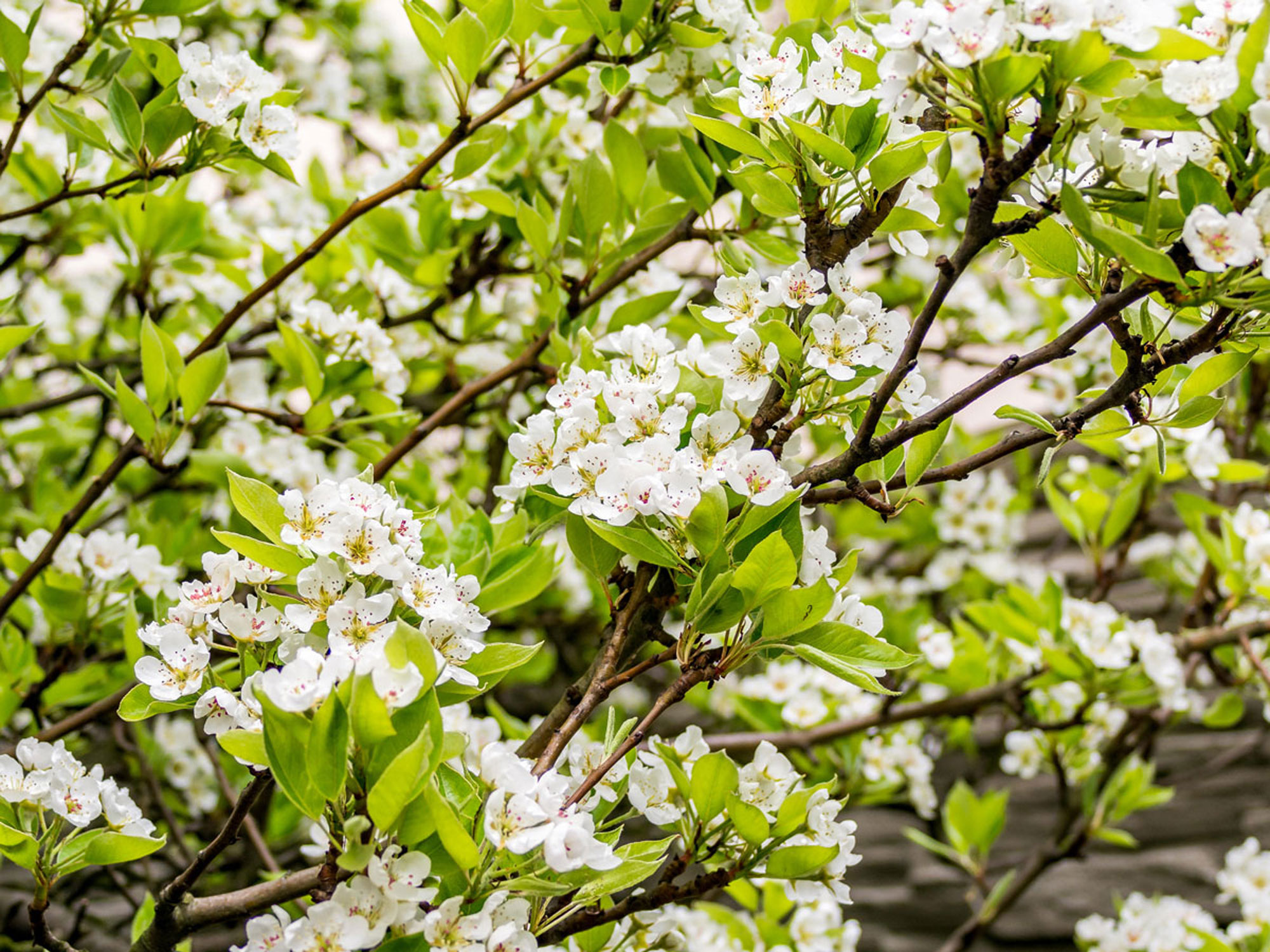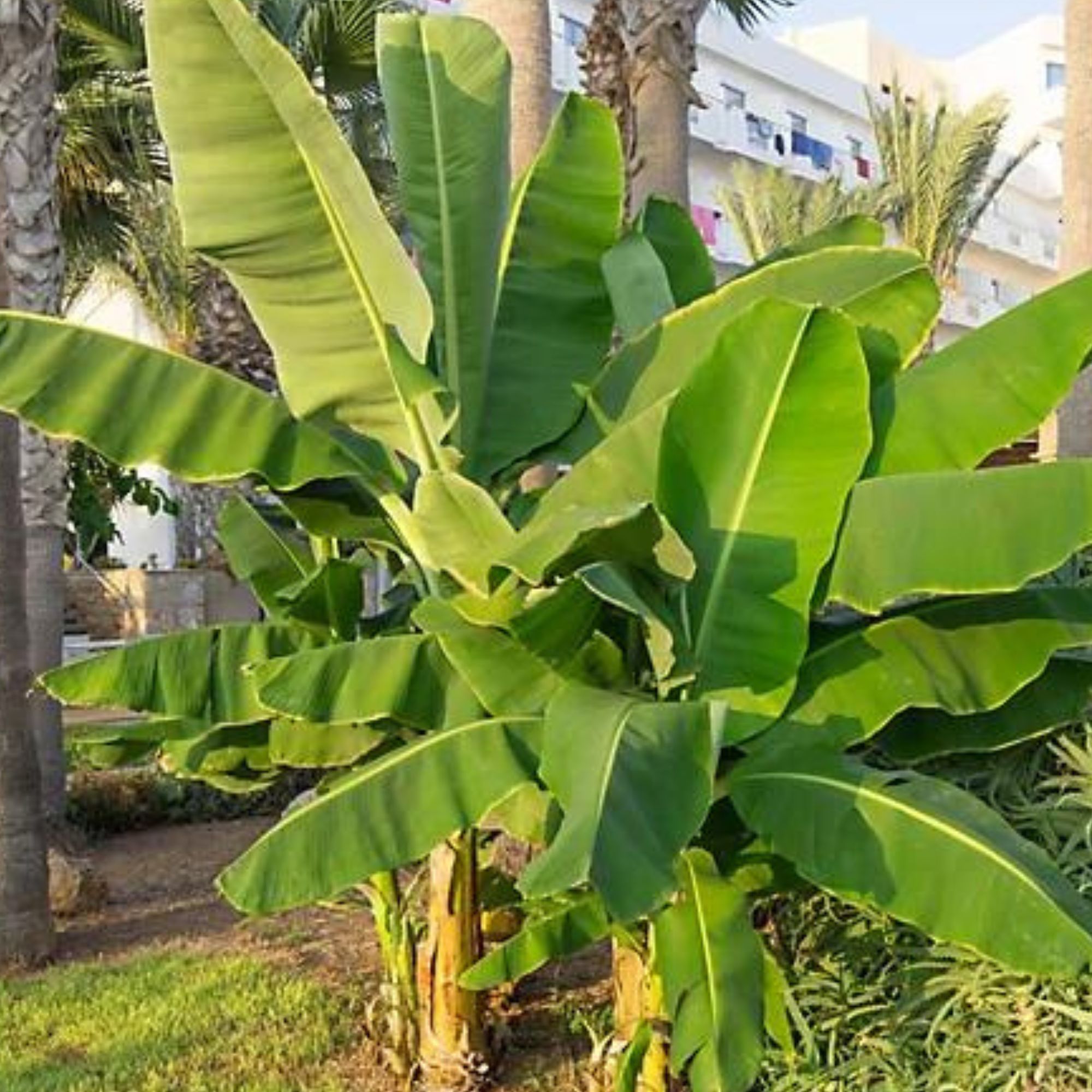7 of the Best Fruit Trees for Privacy — Screen Your Yard and Grow Plenty of Delicious Homegrown Fruit, too
These fruit tree varieties will screen your yard beautifully while also giving you a supply of fresh fruit to nail the edible landscaping trend

When deciding on the best fruit trees for privacy first take into account the available space you have as this will help determine your choice. Factor in mature height and canopy spread, as well as the shape of your tree if you are aiming to create a leafy screen for a particular space. Fruit trees rarely get enormous, so they’re a good choice for urban yards.
When choosing the best trees for privacy you get a lot more for your money than simply enhanced screening and a bowl of fruit. They also bring pretty spring blossom and dappled summer shade to the garden, as well as adding a beautiful focal point and encouraging pollinators and birds into your yard.
Think about what fruit you most love to eat, as it makes sense to choose varieties that are popular in your own home. If space is tight or you're a balcony or courtyard gardener don't forget you can grow fruit trees in containers as well, and if you position them correctly they can usefully serve as screening.

Choose a tree that will thrive in your yard
There are a couple of important things to consider while deliberating over you choice of fruit tree. First, check you live in the right growing zone in order to be able to cultivate the fruit tree of your choice. Second, make sure you have enough space if the variety you choose is likely to end up tall and spreading, or if it needs a companion tree for successful pollination. Avoid impulse buying as this could backfire.
'Before you buy fruit trees make sure they're appropriate for your zone then research their pollination requirements,' says Annette Thurmon, homesteader @azurefarm, and author of Simple Country Living. 'You'll need to know if they are self-fertile (the pollen they produce works on their own flowers) or if they need cross-pollination from a compatible variety. Ask questions and ensure you know what to get before buying random fruit trees at the store.'
Now find out what's made it on to our list of the best fruit trees for privacy.
1. Crabapple

Hardiness: USDA Zones 4-8
Height: 15-18ft
The Livingetc newsletters are your inside source for what’s shaping interiors now - and what’s next. Discover trend forecasts, smart style ideas, and curated shopping inspiration that brings design to life. Subscribe today and stay ahead of the curve.
Compact crabapple trees are one of the best fruit trees for privacy and ideal for small gardens. They come in a range of sizes and forms, many of which create interesting silhouettes to add to the design element of your yard. They make an excellent screening hedge with a profusion of flowers and fruit, while the tree form offers extra screening over your privacy fence.
They're also a great choice if you want an easy low-maintenance tree that performs quickly to add screening in your yard. Wildlife and beneficial insects flock to them, especially in spring when they have clouds of fragrant blossom. As well as this they add color and interest to the garden all year round, with jewel-like fruits that can be used in baking or to make jams and jellies.
There are many varieties to choose from, but one of the best crabapple trees for colorful flowers, showy fruit, and fall foliage is 'Adirondack'. Invaluable in small spaces thanks to its narrow, upright habit, it has deep, rose-pink buds that open to clusters of pure white flowers followed by lots of pinkish-red fruits from late August through mid-December. Just be wary, there are some crabapples, like this Spring Snow one from Home Depot, that are beautiful and flower, but that don't actually produce fruit.
2. Banana

Hardiness: USDA Zones 9-11
Height: 20ft
Hardy banana plants, are a great option if you live somewhere with relatively mild winters. 'If you’re looking for a plant that provides both privacy and aesthetic appeal, hardy banana plants should definitely be on your list,' says Connie Brittenburg, founder of Calendula's Garden.
These evergreen fruit trees can grow up to 20 feet tall, which means they're a great choice for creating a natural screen. Their wide, lush leaves range from light green to deep burgundy, offering a variety of colors to choose from. If you live in Zones 9-11 you should get plenty of fruit too.
'Grande Nain' produces very tasty fruit if humidity and temperatures are right, sending out a flower shoot that can grow very long and attract pollinators. They're also among the best flowers for hummingbirds. Soon you’ll see your bananas forming, and mature trees can produce up to 50lbs of fruit. We also like this Basjoo Hardy Banana plant from QVC.
Hardy banana plants are also tough enough to withstand harsh weather conditions, such as freezing temperatures and strong winds, if they are protected. While they absolutely thrive in warm and humid climates, they can also grow in cooler regions with proper care and attention.
3. Apple

Hardiness: USDA Zones 3-9
Height: 15ft
Choose one of these easy fruit trees to grow and it will make a real focal point in the yard, adding leafy summer shade, good winter structure, and lots of fresh crunchy fruit. The large canopy makes it once of the best fruit trees for privacy too.
'You have a huge selection to choose from when it comes to the size and shape of trees,' says horticulturalist Christina Chung, founder of Fluent Garden and author of The Layered Edible Garden, available from Amazon. 'Apples are grafted on to rootstocks, which will determine their final size and growth habit. This means you can choose from large trees to medium-size ones, all the way down to dwarfing rootstocks that will top out at 12 feet. In small spaces you can also prune them to grow flat against a fence or wall using the espalier method.'
You can also grow apples in a pleached tree form to create privacy and add architectural interest for overlooked gardens. Planted along a fence line they create instant privacy as a stilted hedge without taking up too much space. They’re a great choice for compact gardens too, as pleached trees have restricted roots in line with the crown so they suit smaller outdoor spaces.
There are also columnar apples trees such as Malus domestica 'Scarlet Sentinel', which you can find at Home Depot, that stay super narrow to save space.
4. Fig

Hardiness: USDA Zones 7-12
Height: 15ft
With their abundance of leafy foliage, fig trees are one of the best fruit trees for privacy in your yard. The leaves are large, lobed and can be up to 8 inches long, providing a lovely leafy screen that lets light through. Try growing a fig against a sunny wall or a plant to cover a fence, or alternatively as a freestanding tree if you have the space. They are also well-suited to container planting.
If you choose a fast-growing variety it will quickly fan out and you will get fruit in the first year too. 'The ‘Little Miss Figgy’ variety (which you can find at Fast Growing Trees) is an excellent ornamental and fruit-bearing landscape plant for anyone looking to squeeze a fig tree into a small outdoor space,' says tree expert Fern Berg, founder of TreeVitalize. 'With a dwarf compact habit, it's smaller (it grows 4–8 feet high) and more cold hardy than comparable figs, yet bears large and prolific fruits in spring and fall.'
Other good fig varieties include ‘Black Mission’ and ‘Brown Turkey’ which can also crop twice a year. Or for those in cooler climates the cold-hardy ‘Celeste’ or ‘Chicago Hardy’ are good options. Figs produce best when planted in full sun and well-draining soil.
5. Cherry

Hardiness: USDA Zones 3-7
Height: 8-15ft
Choose one of the smaller varieties of cherry tree that grow around 8-10 feet tall if your outdoor space is limited. Planted up in a large container it will provide a good amount of screening for a sunny balcony, rooftop garden or courtyard patio.
If space is less of an issue cherries look great growing along a fence, used as a hedge to shield a view. Whether you choose to grow one for screening or privacy, or simply for ornamental reasons, a row of these lovely trees will also provide you with a supply of delicious fruit as part of your edible landscaping.
Flowering cherry trees are famous for their beautiful white, pink, or red blossoms every spring. Their upright habit means they can easily be pruned into the shape you want for screening purposes. They grow rapidly too, so you won't have long to wait before they increase the sense of privacy in your outdoor space.
6. Plum

Hardiness: USDA Zones 5-9
Height: up to 25ft
Many plum tree varieties have a lovely teardrop-shaped leaf canopy that is ideal for screening purposes. Planted strategically it can be used to block neighbors' view of a patio, or screen other backyard eyesores.
The foliage of these ornamental trees fills out to become the perfect backdrop to set off the gorgeous fruit the branches will be laden with. In spring there are white fragrant blooms that attract pollinators to your garden.
Varieties like 'Burbank' are smaller-sized trees that won't take up a lot of space, plus you can always reshape your tree with pruning shears in summer as needed to enhance privacy, as well as to create an attractive size and shape.
7. Pear

Hardiness: USDA Zones 5-9
Height: up to 25ft
Pear trees are often mentioned as one of the best privacy trees for small backyards because their tear-drop shape means the leaf canopy is a neat shape that eventually grows to around the height of a first floor window. You can also create a hedge of small pear trees for privacy if you have a boundary that needs screening.
One of the most popular pear trees is the 'Bartlett' variety (which you can find on Amazon), and its smaller size means you can squeeze one into your yard even if your outdoor space is limited. Alternatively if you have a good-sized yard you can leave it to grow to its full height to throw shade over your garden on hot days.
The 'Bartlett' variety of pear tree is vigorous growing too, so it won't be too long before you start picking your first ripe fruit to enjoy.
Lifestyle journalist Sarah Wilson writes about garden design and landscaping trends. She has studied introductory garden and landscape design, and also has an RHS Level 2 qualification in the Principles of Plant Growth and Development. She is a regular contributor to Livingetc.com, and also writes for Homes & Gardens, Country Living, Country Homes & Interiors, and Modern Gardens magazines. Her first job was at Elle magazine, during which time a trip to the beautiful La Colombe d'Or in St-Paul-de-Vence led to an interest in writing about all things botanical. Later as lifestyle editor at Country Homes & Interiors magazine one of the highlights were the run of captivating country gardens that were featured.





